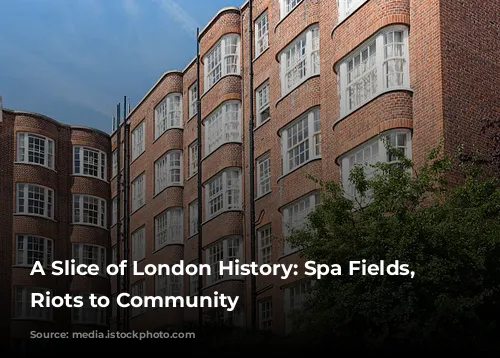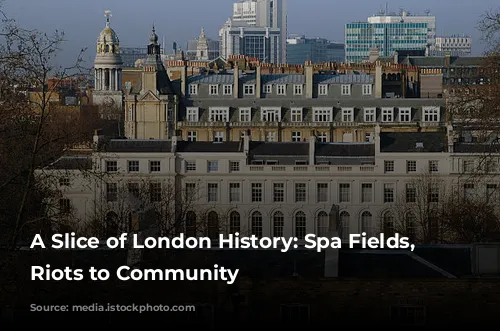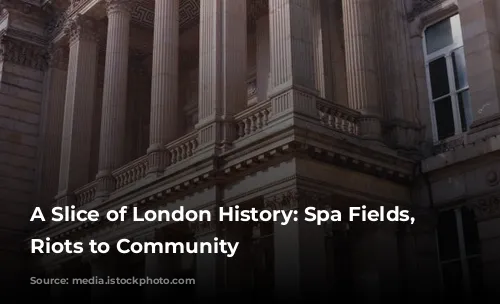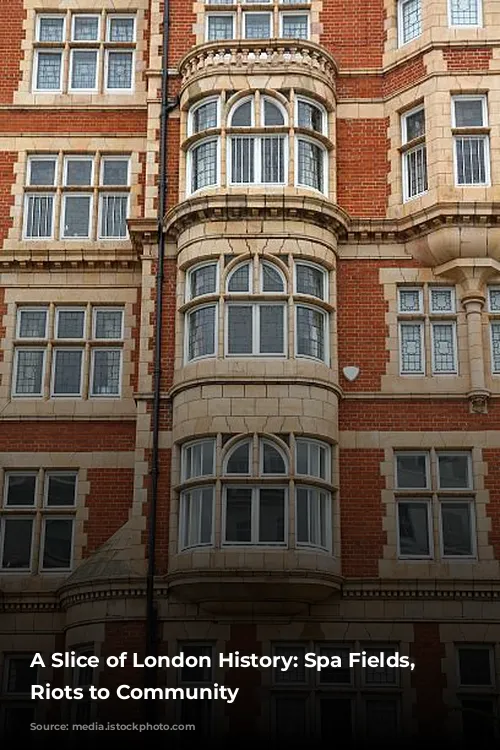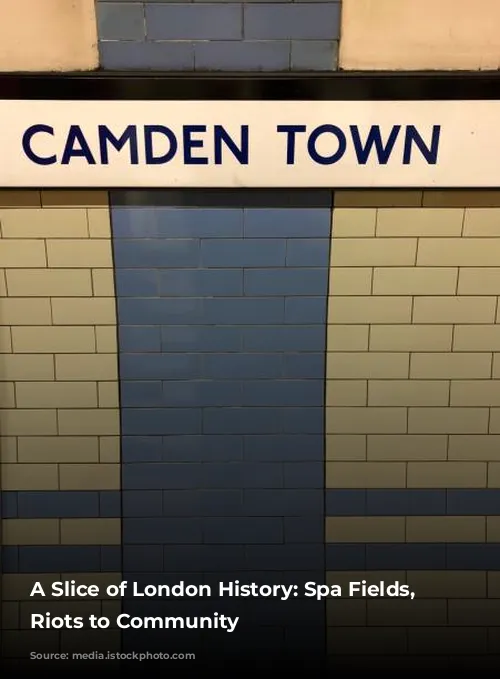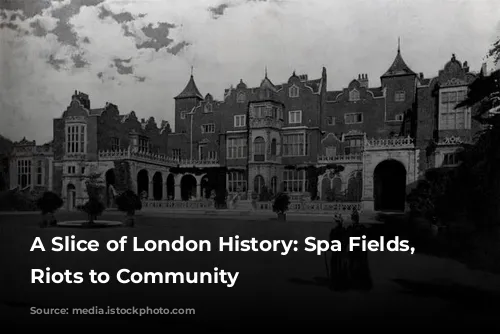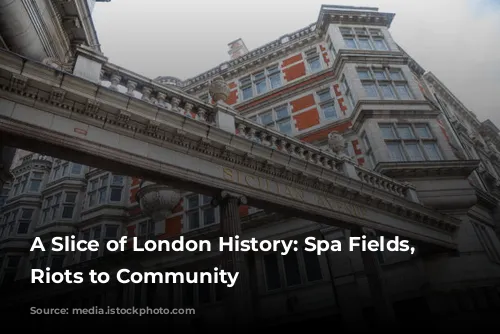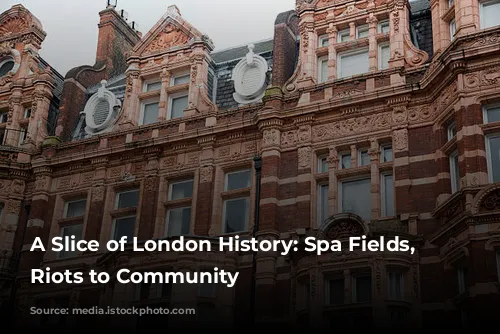Spa Fields, a charming park nestled within the bustling London Borough of Islington, holds a fascinating history brimming with both turmoil and hope. Today, it’s a haven for office workers seeking a lunchtime escape and a playful playground for children. However, beneath its current tranquility lies a legacy shaped by violent protests and a short-lived utopian experiment.
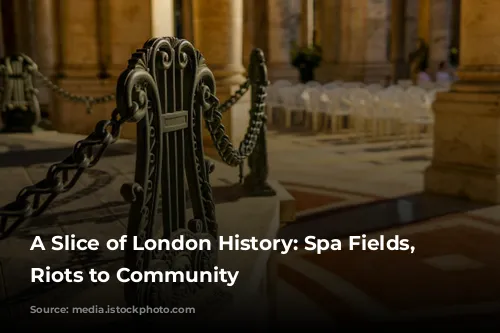
A Troubled Past
The 1816 Spa Fields Riots painted a dark picture of the area’s early days, highlighting the deep social and economic unrest simmering beneath the surface. The “rude sports” that dominated the area, like duck-hunting and prize-fighting, speak to a time of lawlessness and societal upheaval. Even the footpads who preyed on unsuspecting pedestrians were a grim reminder of the precarious conditions that prevailed. This turbulent period ended when the Countess of Huntingdon established the Spa Fields Chapel in 1777, marking a gradual shift towards a more moral and respectable environment.
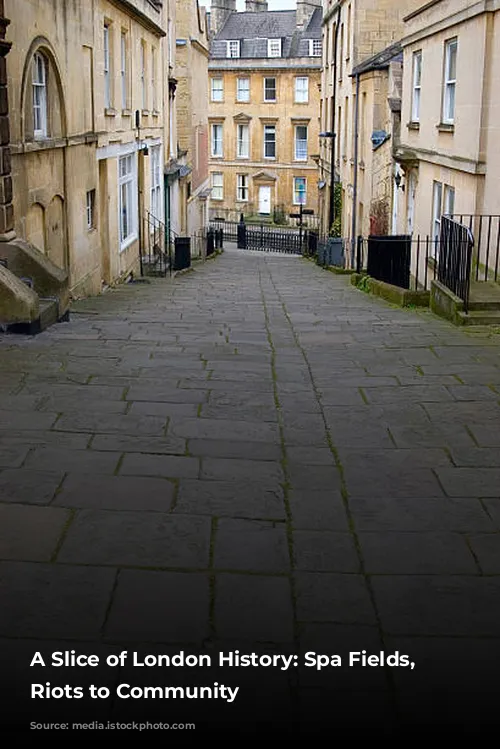
A Community Built on Dreams
Fast forward to the early 19th century, and Spa Fields became a breeding ground for progressive ideas. The Owenite community, a group of idealists inspired by Robert Owen’s socialist principles, set up shop in Guildford Street East, Bagnigge Wells Road, and Spa Fields. The community, led by George Mudie, envisioned a society based on cooperation and shared resources, a concept that resonated with printer George Hinde and influential printer Henry Hetherington.

From Hope to Disillusionment
Their plan involved a “Co-operative and Economical Society” composed of 200 families. Men contributed a guinea each, while women diligently toiled from dawn till dusk. The children, too, were kept busy without a moment’s respite, contributing to the community’s well-being. The community envisioned a self-sufficient existence, manufacturing their own necessities and saving an impressive £8,000 annually. Mudie envisioned a society free from the burdens of poverty and dependence.
By December 1821, the community was in full swing, their lives governed by a strict schedule. The community offered various services, from cobbling to painting, and even established a school. Mudie’s vision was further bolstered by the “monitor” system, a scheme designed to foster personal accountability and spiritual guidance.
However, the demands of running the community proved too much for Mudie. The Economist, his journal dedicated to promoting the community’s ideals, suffered as a result. The publication ceased in March 1822, and despite the community’s continued efforts, it eventually dissolved two years later. While the exact reasons for its demise remain unclear, it’s clear that the visionary experiment was not without its challenges.
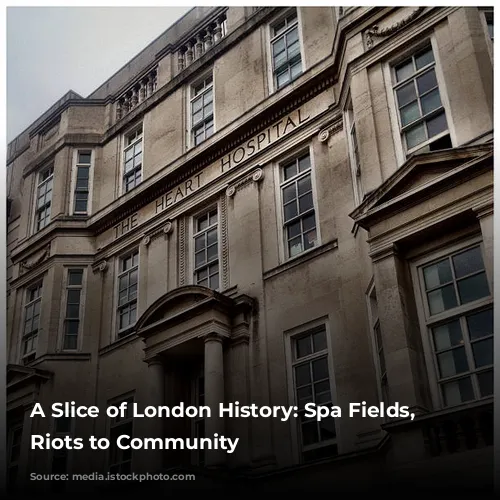
A Legacy of Hope and Despair
Spa Fields stands as a testament to the optimism and the struggles of a time gone by. The violent protests and the brief but ambitious community etched a complex history onto its landscape. Today, while the park is a peaceful haven, its past resonates in its very name, reminding us of the power of both collective action and societal challenges. Spa Fields, much like its history, offers a glimpse into the human spirit’s capacity for both hope and despair.
